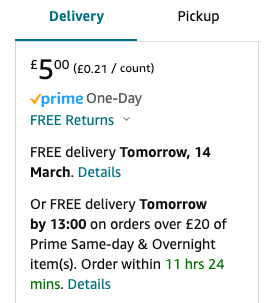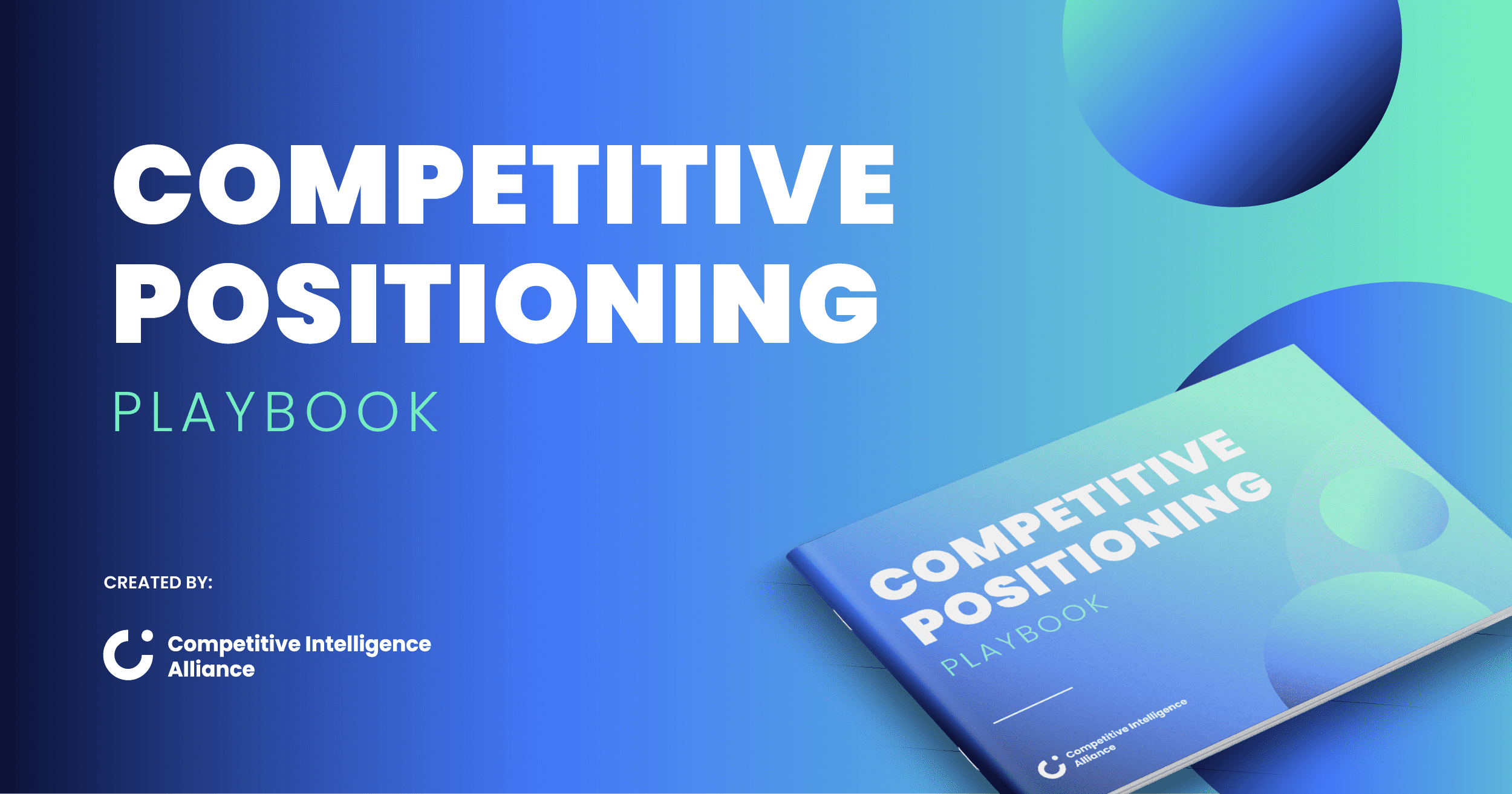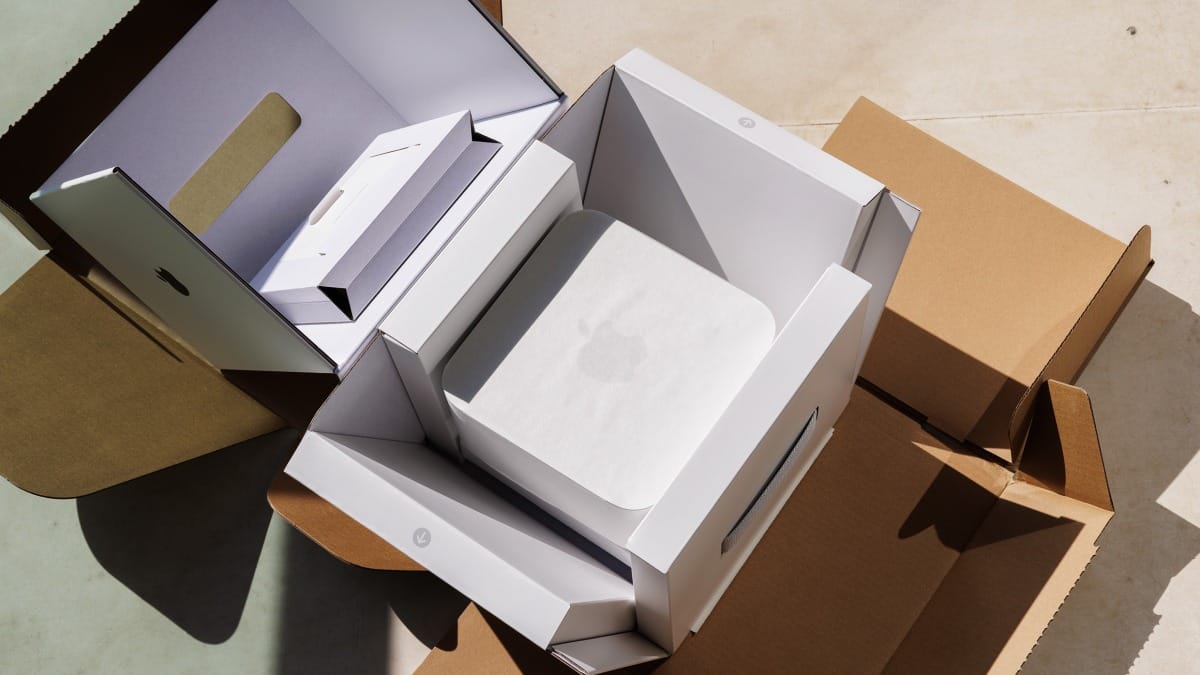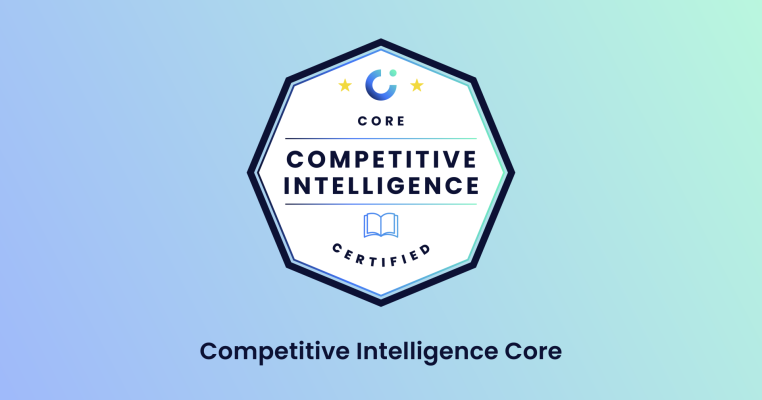Competitive differentiation is the process of making your product offerings unique from those of your competitors. In practice, this often means creating or discovering what you do better than them, and emphasizing these aspects of your products or services.
Part of the challenge of competitive differentiation is making your customers understand that differentiation – via clear, direct messaging. This is the job of marketing, but is informed by competitive intelligence.
Competitive intelligence helps you understand your competitive differentiators by offering crucial context. You’ll understand your competitors’ differentiation, and can use this to inform your own.
What is an example of competitive differentiation?
To explain the concept clearly, here’s a real-world example of competitive differentiation in action.
Amazon first positioned itself as ‘The Everything Store’. An online retailer, born in the early days of the Internet, that sold more or less everything you could think of.
It still lives up to that promise, but Amazon has continued to competitively differentiate.
In particular, through its distribution differentiation (also known as channel differentiation). In other words, how they deliver goods to customers.
With Amazon Prime, customers receive next-day or even same-day delivery on products they order before a certain time of day.

Even if a rival could compete with Amazon’s huge product range and its prices, it would have a hard time matching its distribution differentiation, and the convenience it offers to customers.
Why is competitive differentiation important?
Unless you’re lucky enough to exist in a category all your own, you have competitors vying for a piece of your market share right now.
Even for those who truly have no competitors, it’s only a matter of time until others sniff out the opportunity and set up shop right next door.

Having to compete is one of the realities of doing business. And the longer you’re around, and the more demand there is for a service like yours, the more crowded your marketplace will become.
If you’re to survive in a crowded marketplace, you’ll need to establish a competitive advantage.
This means having some commercial advantage over your business rivals. This could be anything from:
- Exclusive relationships with suppliers.
- Strong brand equity.
- Economies of scale.
How competitive differentiation plays into competitive advantage
Differentiation comes about as a consequence of your competitive advantages.
Your exclusive relationship with the best supplier should mean competitors have to source materials from lesser suppliers. For them, this could mean higher acquisition costs. Your competitors must either swallow those costs themselves, driving down their profit margins, or charge higher prices for their products, putting off customers.
Your supplier advantage, on the other hand, helps you either pass savings on to customers, attracting them at a price point low enough to differentiate you from more highly-priced competitor products.
Or, you keep prices higher, and increase your profit margins. Higher profit margins mean you can reinvest in your business and its products, further improving them, creating new competitive advantages, and new avenues for competitive differentiation.
Competitive differentiation and customer buying decisions
Competitive differentiation is all about getting your prospects to choose you over the competition.
If there’s nothing different about you that customers care about, why should they choose you?
Your products don’t have to blow the competition away. But, for some subsections of your target audience, there needs to be something that sways buying decisions in your favor.
Strong differentiation is that something that draws customers to you, and wins your org the market share.

No product is created in a vacuum
The Competitive Positioning Playbook teaches you...
👷 How to blend CI and customer research for a rock-solid positioning strategy.
🙅♀️ The three steps you must not skip in crafting competitive positioning.
🪛 A top-to-bottom tear down of the positioning process, and how CI fits in.
🏹 How to use competitive positioning to shatter your org’s revenue ceiling.
Interested? Click the button right now to check it out.
5 Examples of competitive differentiators
Here are five examples of ways to competitively differentiate:
- Product differentiation.
- Brand differentiation.
- Price differentiation.
- Service differentiation.
- Channel differentiation.
1) Product differentiation
Your products themselves can be the focus of your differentiation.
If your products offer unique benefits to customers that competing solutions do not, customers will want to experience those benefits, and will prefer your products.
Such benefits might be a consequence of certain features your product offers. These features might not be unique, but if they serve customer needs better than the features of competitor products, they’ll attract prospects all the same.
The overall user experience of your product is another possible avenue of product differentiation. Your packaging, even, can elevate the consumer experience enough to be a differentiator in itself.
Ideally, all aspects of the user experience, from the unboxing of your physical products, to the benefits your features provide, should elicit the same positive emotional response from customers.
Apple is a great example, in many ways pioneering the premium feeling of the unboxing experience, while their products exude exclusivity.

2) Brand differentiation
A trusted name goes a long way, and the strength of your brand is another avenue for competitive differentiation.
Not always reserved for businesses that have been around for decades, younger brands can build strong brand equity, too. Smart advertising strategies are the way to do this, while fiercely protecting your reputation as you build a track record of delivering on your promises.
Competitors love to capitalize when rivals overpromise and underdeliver. Especially when these moments are widely publicized. Such scenarios are opportunities to win over disgruntled customers.
When you do the opposite, and focus on delivering on simple, achievable, useful promises, you become more trusted, and build brand loyalty.
You can then capitalize on your good reputation by associating it with strong branding. Smart advertising campaigns create a web of associations between your reputation and your branding, including your logo, and your brand colors. In the future, prospects and existing customers need only see some aspect of your branding to be reminded of your strong reputation and the trust they feel for you.
3) Price differentiation
Your competitive pricing strategy is another route for differentiation.
Pricing your products in a different range to competitors makes you stand out.
For lower prices, the consequence is clear. Customers who want to save money are attracted to cheaper products.
But the same holds true for high prices. Prestige pricing strategies are another way of competitively attracting particular market segments.

When prospects have large disposable incomes, or want to offset large amounts of risk, price is not so much of an issue. Premium products are usually sold at a premium price. When a customer wants quality, they’ll opt for more expensive products and services to be sure they’re getting the best.
4) Service differentiation
You’ve heard of ‘human-to-human’ (H2H) marketing.
Rather than business-to-business (B2B) or business-to-consumer (B2C), H2H marketing strategies aim to communicate with customers and prospects on a human, emotional level first. When it’s authentic, it works.
At the end of the day, you make more money when you’re more useful to more people. There’s no getting around it: there will always be at least two people in the business equation.
If you can make people feel good about doing business with you, there’s a good chance they’ll come back for more.
This is what service differentiation is all about.
Businesses can base their entire competitive differentiation strategy on their superior customer service. They’ll invest in their ability to deliver a better experience for customers at every touchpoint and interaction.
This works especially well in industries known for offering less-than-stellar customer service, and doesn’t just mean an upbeat voice on the other end of the phone. Service differentiation really comes into its own when a traditionally difficult, or painful, experience, becomes effortless and pleasant. Given the choice between the two, which would you choose?
5) Channel differentiation
Finally, there’s channel differentiation.
Also known as distribution differentiation, this method has to do with how you deliver a service, or how you get your product to your customers.
This might apply to where your products are sold. If you manage to get your products on shelves in places your customers already go, you don’t need to invest in getting them to change their behavior to find what you’re selling.
Convenience in general is a huge factor in channel differentiation – earlier, we mentioned Amazon Prime’s same-day and next-day delivery options. Such options set Amazon apart from its competitors by offering customers a level of convenience it’s difficult to find elsewhere.

How to establish competitive differentiation
Here's a five-step process for establishing competitive differentiation:
- Identify what your customers want.
- Perform customer research.
- Figure out where your strengths lie.
- Gather competitive intelligence.
- Establish a strategic plan.
1) Identify what your customers want.
There are emotional problems your target audience is dealing with that they want solved. Solving these problems is the crux of running a successful business.
Your first step in establishing competitive differentiation is to orient yourself towards these problems, so you can be sure you’re moving in a direction that will maximize your utility to your target market.
2) Perform customer research.
To learn not only what your customers want, but also what they like best about you and your products, you need to perform customer research.
Interview existing customers. Do win/loss interviews to establish reasons why customers chose you over your competitors (or not).
Talk to prospects about the challenges they face, and the concerns that keep them awake at night. Then establish how good of a job both you and your competitors are doing of ridding them of these headaches with your products.
3) Figure out where your strengths lie.
If you can lean into your existing strengths, you’ll save money and put the wind at your back.
That’s why it pays to go further than your customer research.
Identify existing sources of competitive advantage so you can be sure you’re putting them to good use.
The VRIO framework is crafted for exactly this purpose: to help you identify untapped sources of competitive advantage already present in your business.
4) Gather competitive intelligence.
So, you begin with your customers. Then you learn as much as possible about the current state of your business.
The next step is to learn as much as you can about your competitors. This process begins with your customer research, but shouldn’t stop there.
Gather competitive intelligence to learn where your competitors are strong. Once you know this, make a measured decision whether you want to go head-to-head with them in these areas.
Most often, it makes more sense to differentiate by positioning yourself to meet an as-yet unmet (or underserved) customer need. This way, you confine your activities to exploiting competitor weaknesses, making more efficient use of your finite resources.

5) Establish a plan.
Based on your analysis so far, determine your unique value proposition (UVP), and your unique selling points (USPs), compared to your competitors.
Your unique qualities set you apart. What do you do well that your competitors don’t that, crucially, customers really care about?
Answering these questions will help you figure out how to communicate your differentiation effectively to customers – a crucial aspect of competitive differentiation you shouldn’t overlook.
There’s always room for improvement, too. So consider the examples of competitive differentiators discussed in the previous section to roll out a strategic plan that walks you towards an even more differentiated position in the competitive landscape.
Give yourself an unfair advantage
Our newest competitive intelligence course lifts the lid on the frameworks and processes experts use to deliver impactful intel with confidence.
You can expect:
- A 100% self-paced and online course packed with competitive wisdom so you can stop worrying and start winning.
- Bonus features from established competitive professionals to give you an unfair advantage.
- 6 downloadable, customizable templates and frameworks that make analysis a cinch.

Competitive Intelligence: Core
We'll show you how to:
- 👑 Lead development of your org’s all-important competitive positioning.
- 🦾 Master CI’s essentials, including its most powerful research techniques.
- 🚀 Arm sales and customer success with intel to skyrocket win rates and turn down churn.
- 🧠 Offer leaders critical intel that informs their decision-making and strategy.
- 📈 Elevate CI’s role within your org to ensure career progression.





.png?v=0205f14132)